The 2021 season hasn’t been very kind to Reds starting pitcher Luis Castillo, who currently holds a 6.29 ERA through his first five games started. After a rocky season opener, where he surrendered eight earned runs in just 3.1 innings pitched against the division-rival Cardinals, Castillo rebounded nicely against the Pirates. He may have faced an underwhelming lineup, but Castillo threw seven shutout innings with just four hits allowed. He struck out five batters, which is five more than he struck out in his first start. That’s important to note because strikeouts—or lack thereof—might be the biggest concern of Castillo’s 2021 performance at a surface level. After posting a career high strikeout rate of 30.5% in 2020, Castillo’s strikeout rate has dropped down to 17.1%. It’s the worst strikeout rate of his career. Let’s dig into some of the contributing factors.
Too Much Command or Not Enough?
“Just give me a pitcher who throws strikes!” screams the old man who is still catching his breath from yelling at the clouds. While Castillo is posting a career low in strikeout rate, he is also posting a career low in walk rate. Of course, I’m not advocating Castillo to walk more batters—walks are typically bad—but rather pushing the idea that Castillo’s strikes are way too hittable. Let’s do a few comparisons.
The Four-Seam Fastball
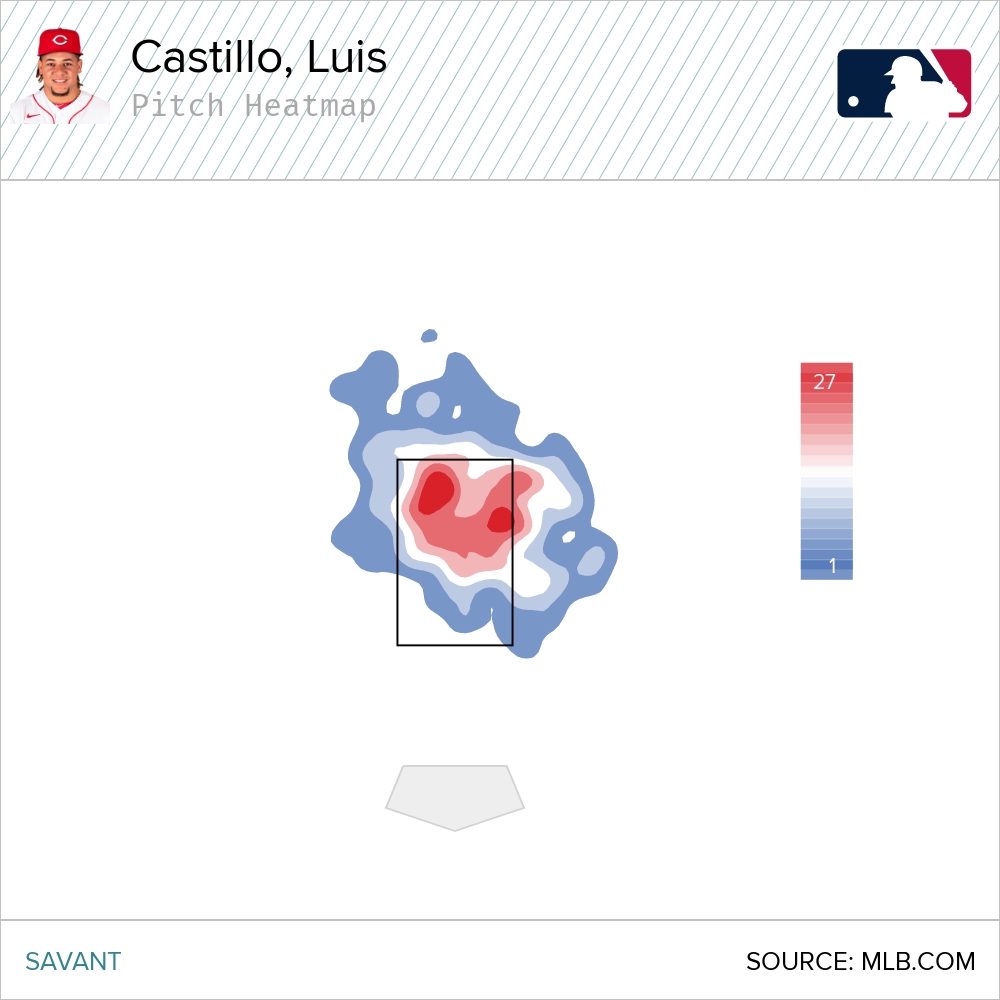 |
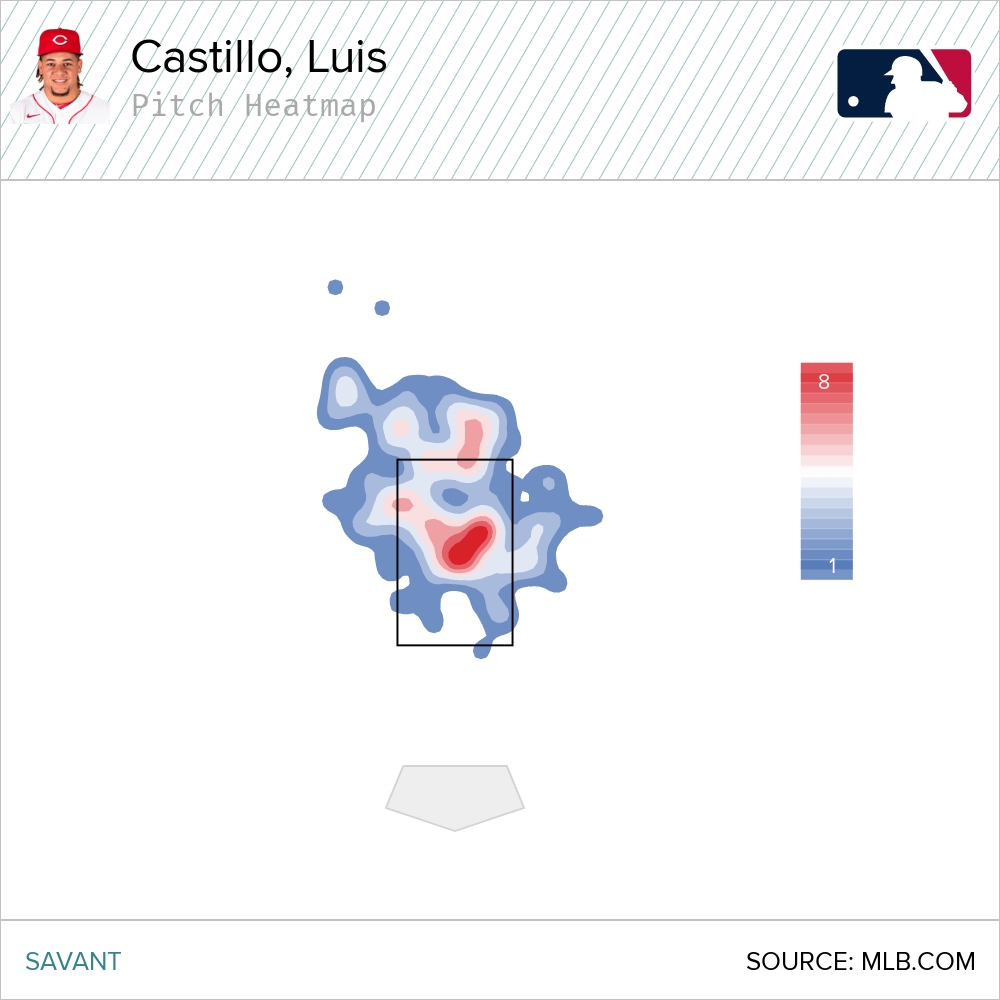 |
| 2020 4-seam Fastballs | 2021 4-seam Fastballs |
The picture paints itself here. With 97th percentile fastball velocity in 2020, Castillo benefited heavily from throwing his fastball up in the zone. Living at the top of the zone helped lead him to his best fastball CSW% of his career, 29.5%, nearly making his four-seamer a plus pitch by that metric. But this year his CSW% is currently a career worst 25.7%, making the pitch a borderline poor one. His whiff rate on the pitch has tanked from 37.2% to 23.8% and his called strike rate has dropped from 15.8% to 12.2%.
The Slider
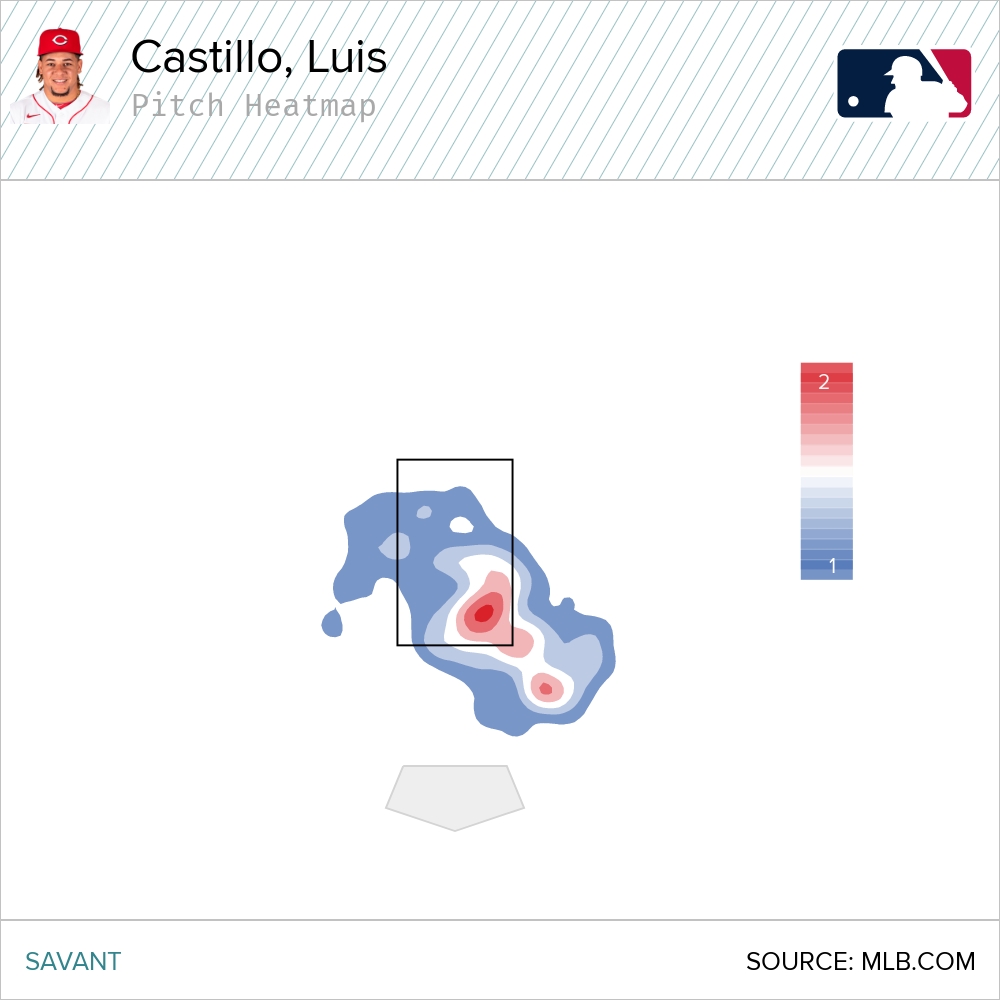 |
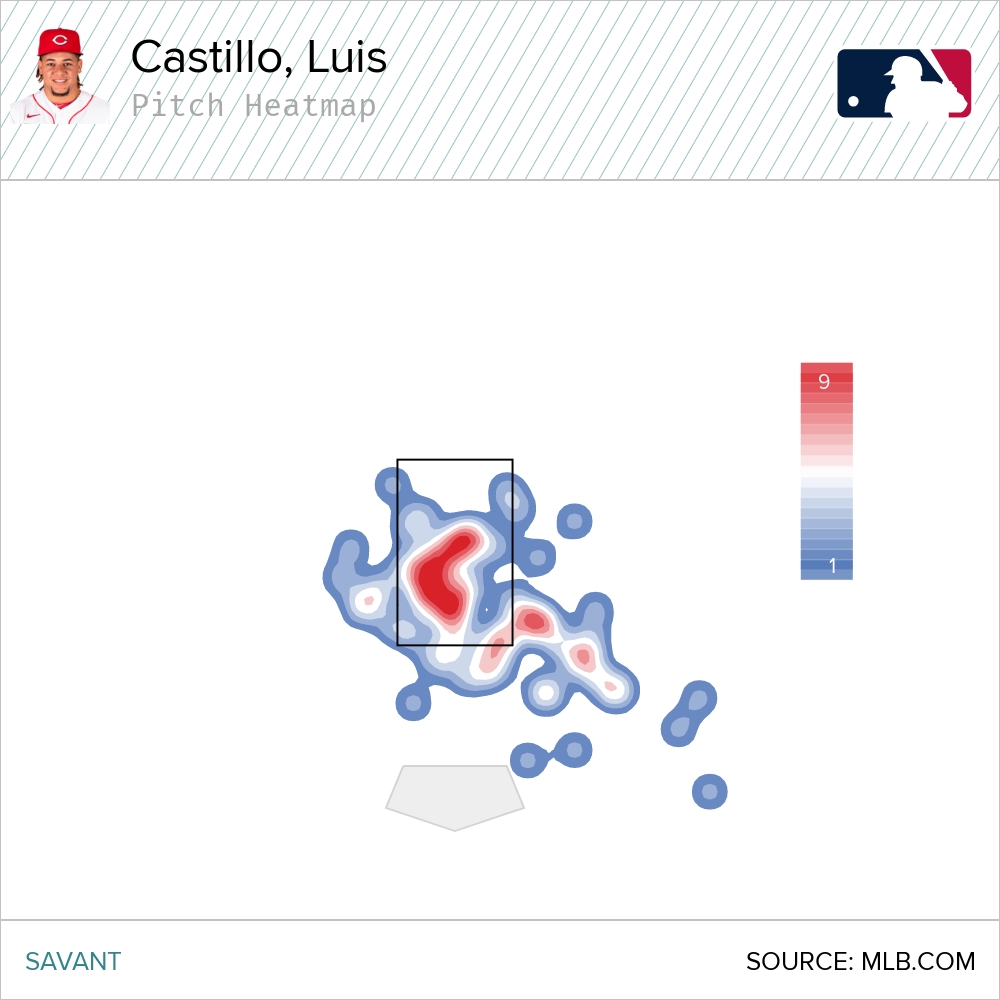 |
| 2020 Sliders | 2021 Sliders |
Again, Castillo’s locating another pitch in the heart of the plate way too often. In 2020, Castillo’s slider was arguably his most effective pitch. Although he throws it the least often, his slider produced a .179 xwOBA, .270 xwOBAcon, 42.3% whiff rate, and 33.3% PutAway rate. This season it’s turned in a .360 xwOBA, .412 xwOBAcon, 21.7% whiff rate, and a measly 6.3% PutAway rate. The interesting part here is that Castillo’s slider’s CSW% is nearly identical to last season’s and stands at a still impressive 36.5%. But this is concerning, because it is being carried by a seemingly unsustainable 28.6% called strike rate—an increase of 8% from last year. I can’t imagine hitters continuing to take sliders over the heart of the plate against Castillo.
The Sinker
Castillo throws his sinker nearly as often as he does his four-seamer and it’s undoubtedly his worst pitch this season. Hitters have a .505 xwOBA and 58.3% hard hit rate against it. The pitch has a run value of 7 (positive numbers are bad) and a whiff rate of just 7.1%! Any guesses on what his sinker heat maps look like?
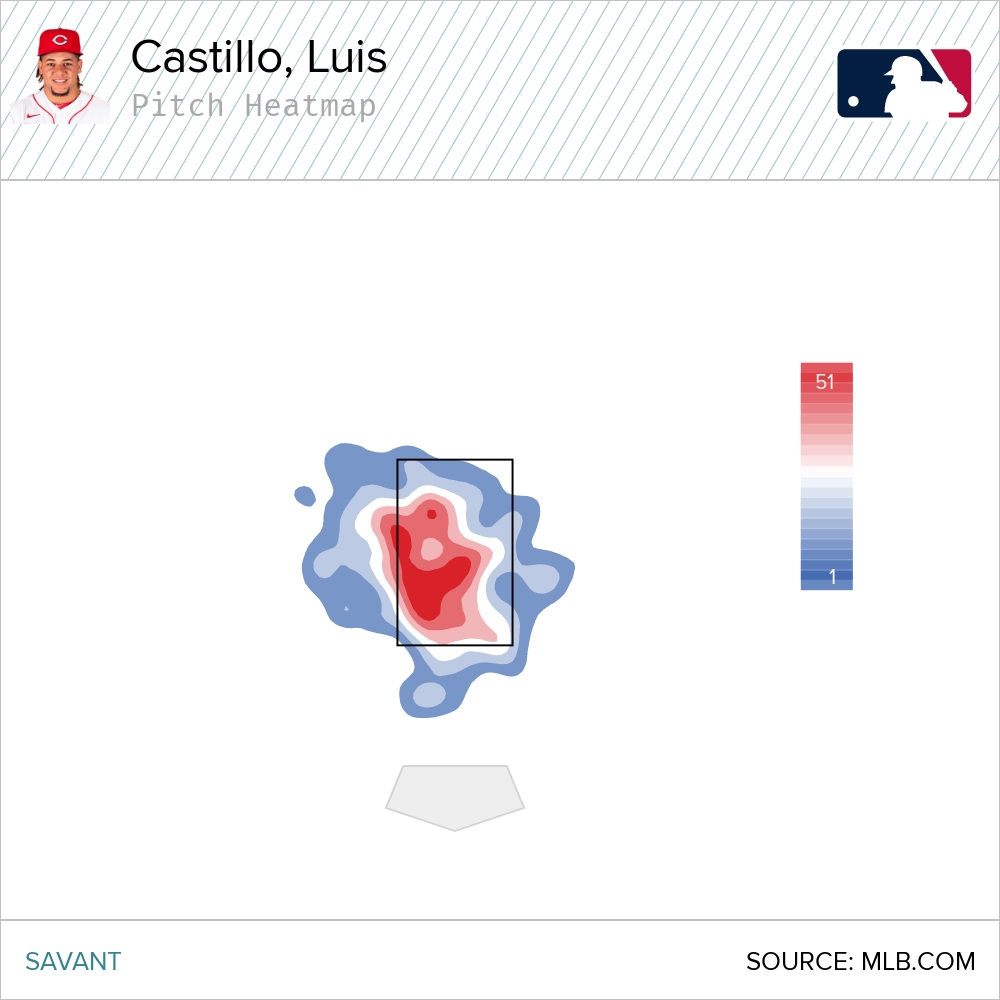 |
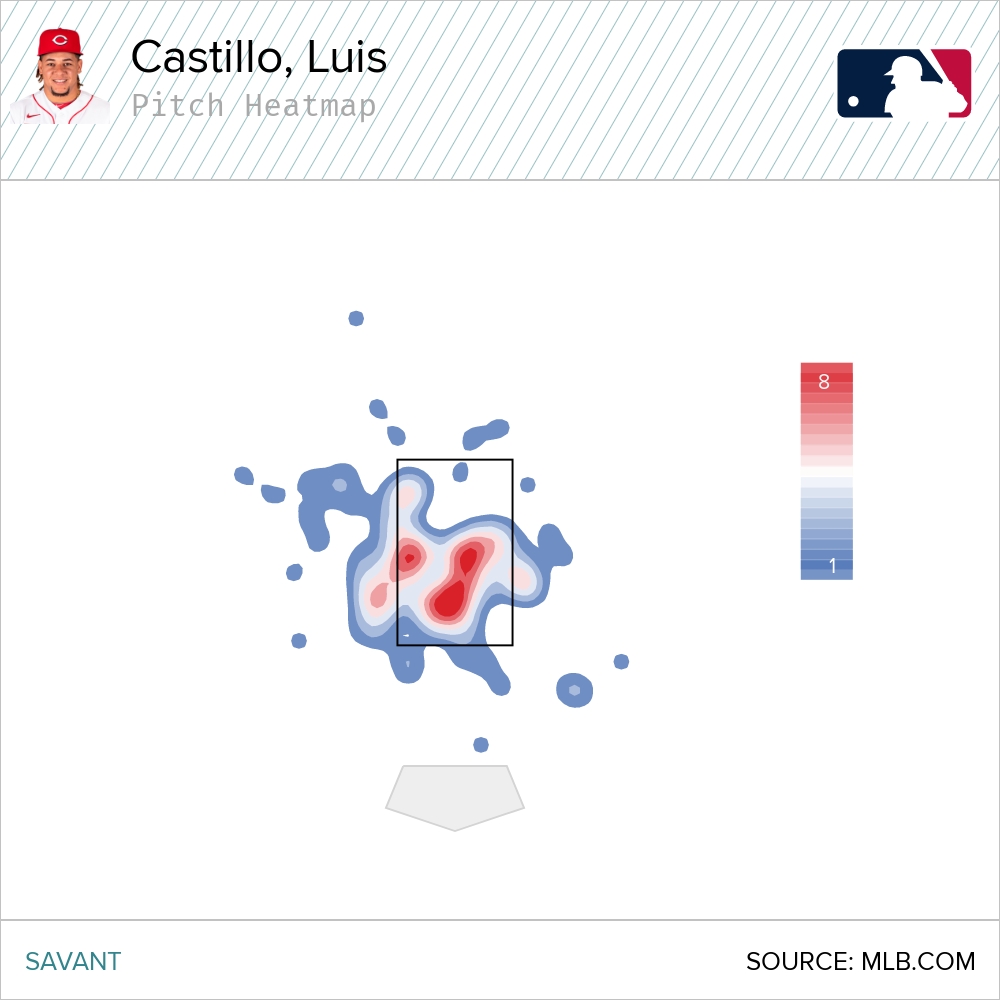 |
| 2020 Sinkers | 2021 Sinkers |
You guessed it! More pitches over the heart of the plate. You might think there is less disparity in these two heat maps, but when we consider the movement of Castillo’s sinker, the pitch’s drastic implosion makes more sense. Between this season and last season, his sinker has averaged around 25 inches of vertical drop and 18 inches horizontal break. Since these heat maps are in the perspective of the catcher, that means his sinker in 2020 was running into right-handed hitters and away from left-handed hitters. And although the pitch wasn’t a whiff machine last season either, this approach led to a near 70% ground ball rate. But now, that ground ball rate is down 11% and the movement of Castillo’s sinker is practically nullified because of where it ends up crossing the plate. Pitches with average movement, that get left over the middle of the plate, end up getting crushed.
The Changeup
Castillo’s bread and butter is his changeup. He throws it nearly 40% of the time and last year it posted a 40.1% whiff rate. But even this great pitch is following the trend. This season it’s only garnered a 29.4% whiff rate and hitters hold an xBA of .240 against it, .070 points higher than last season.
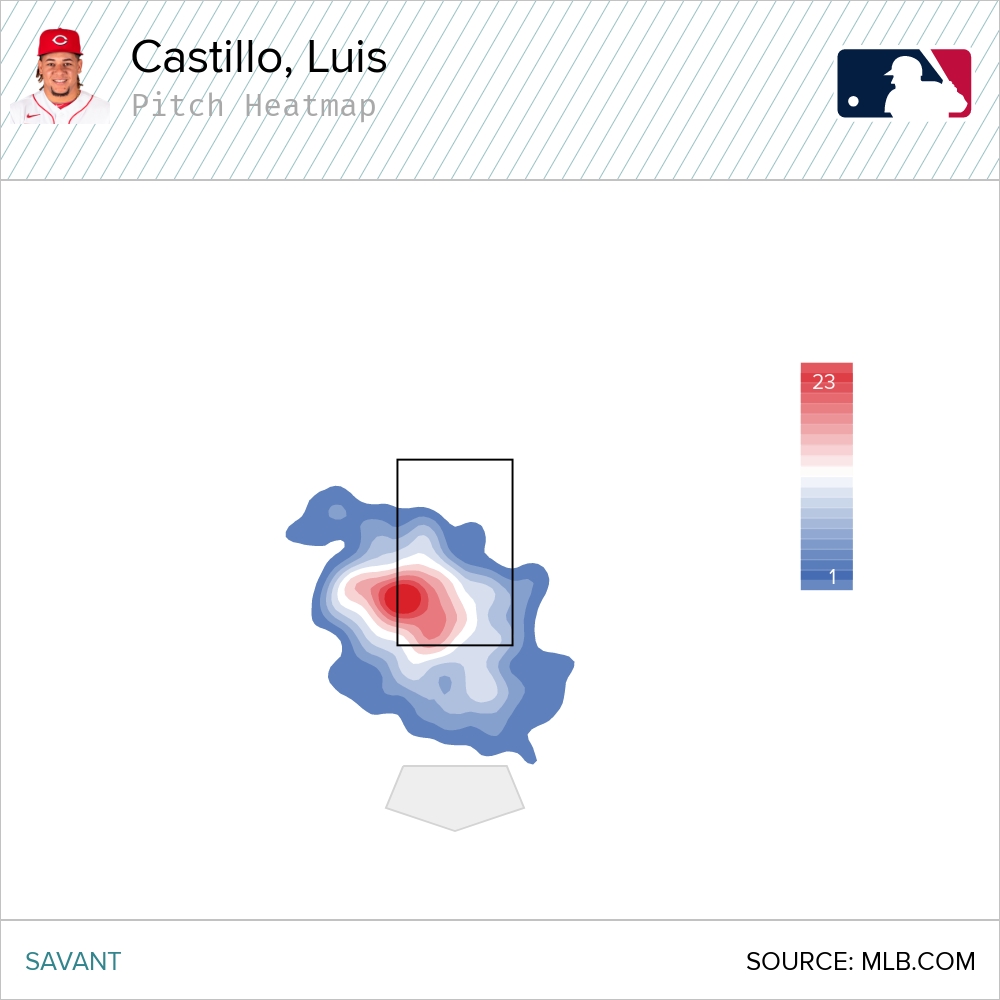 |
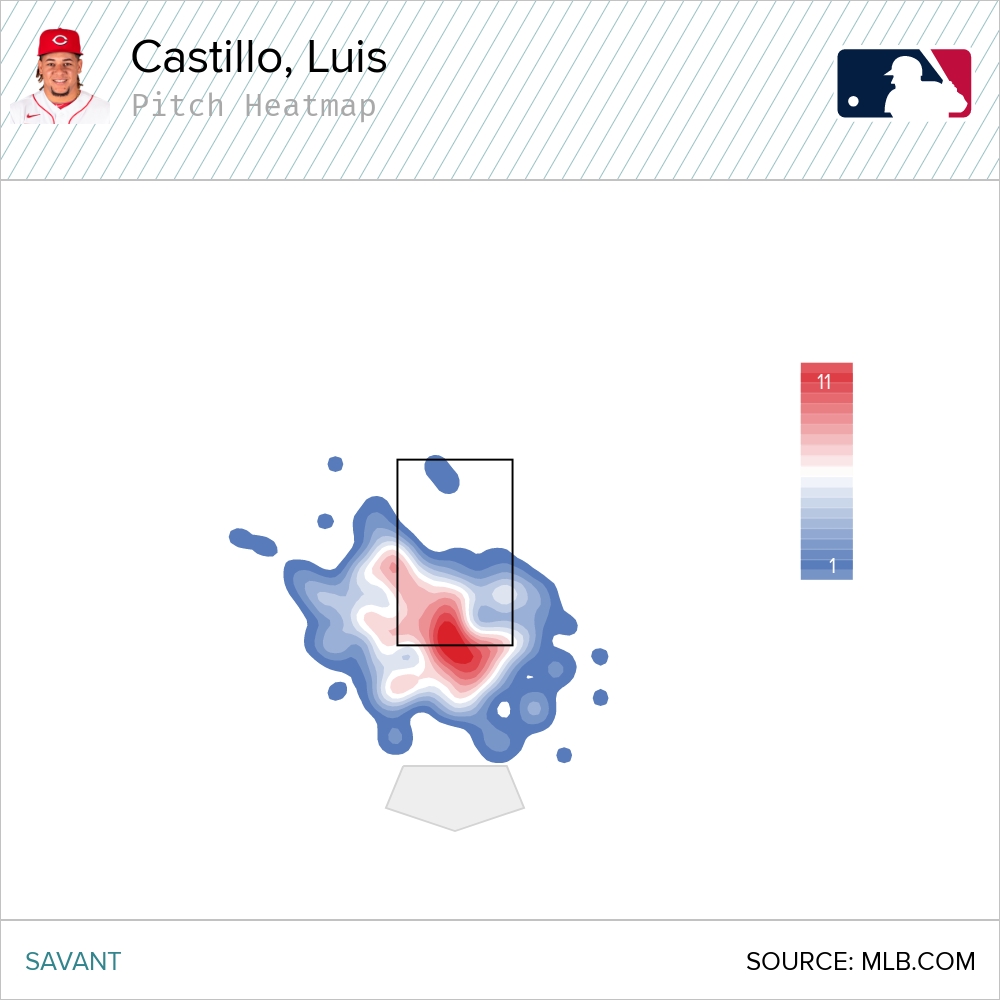 |
| 2020 Changeups | 2021 Changeups |
His location in 2021 may not seem like it’s necessarily bad, and in fact, his ground ball rate on the pitch has increased 12%. But, the swings and misses have still dropped and hitters are hitting the pitch hard 16.6% more often. And to me, that’s because of two reasons. First, more contact allows for the possibility of more hard contact. Second, Castillo’s changeup does not possess good horizontal movement, so albeit a lot of vertical movement, the pitch is still being left in middle of the plate! Regardless of how much drop his pitch has, if it’s being thrown down the middle of the plate (horizontally) and a hitter hits it—even if they hit the top of it—it’s probably going to be with the sweet spot of the bat.
The conclusion here is pretty trivial: All four of Castillo’s pitches are being left over the middle of the plate way too often. Not only are these pitches being hit more often as a result, but they are also being hit harder, resulting in Castillo finding himself in the 37th percentile by average exit velocity. A lot of people may think throwing strikes is always good, but Castillo is proving that too good of strikes can be really, really, bad.
The Silver Linings
For all the ugly, there are still some bright spots to Castillo’s 2021. First, his pCRA is still a 4.33! It’s still not something to write home about, but it paints a drastically different story than his 6.29 ERA and 5.32 FIP. And by most of the movement of his pitches, Castillo still has the stuff.
| Vertical Movement (inches) | Horizontal Movement (inches) | |||
|---|---|---|---|---|
| 2020 | 2021 | 2020 | 2021 | |
| 4-Seam Fastball | 16.5 | 17.2 | 11 | 9.7 |
| Sinker | 24.6 | 25.7 | 18 | 17.7 |
| Slider | 35.8 | 40.2 | 0 | 1.9 |
| Changeup | 34.1 | 36.8 | 16.5 | 16 |
Almost every pitch is moving in a similar manner as it did in 2020, which tells me that the raw ability is still there. And if we pair this with some improved tunneling, it creates something interesting.
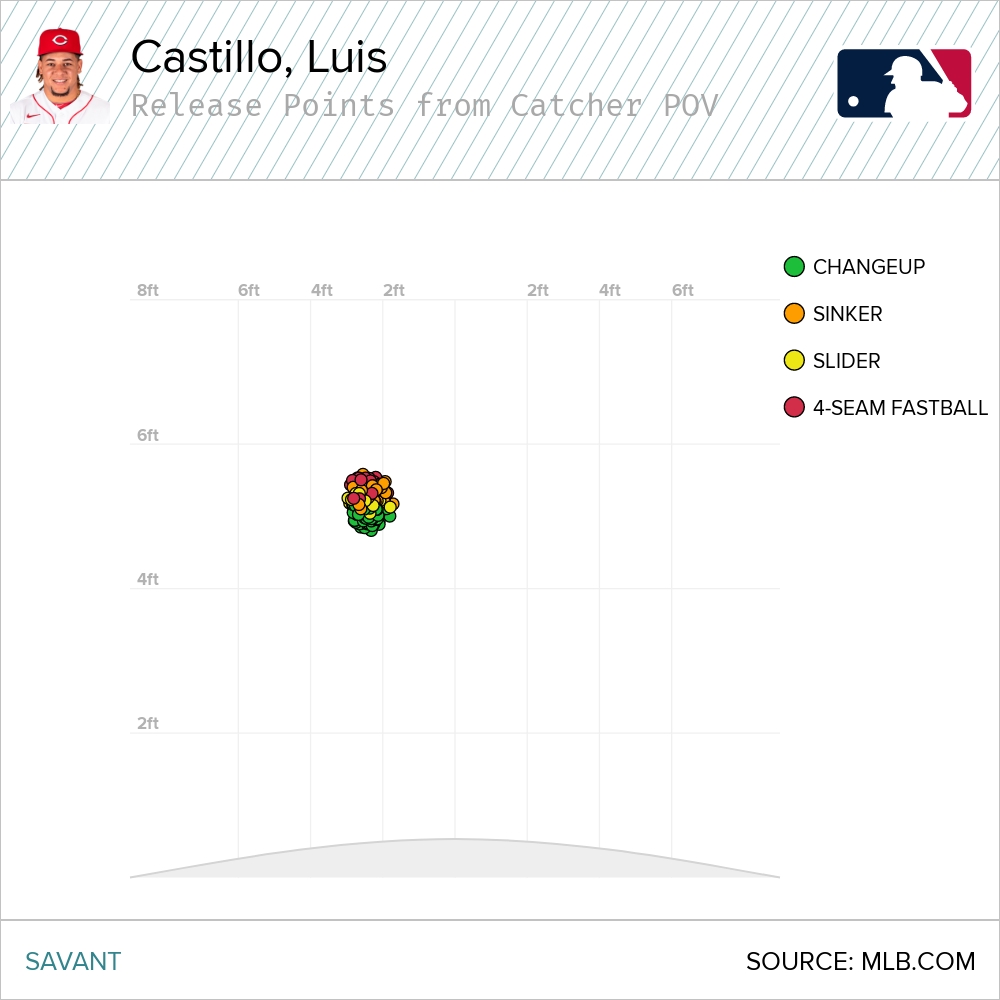 |
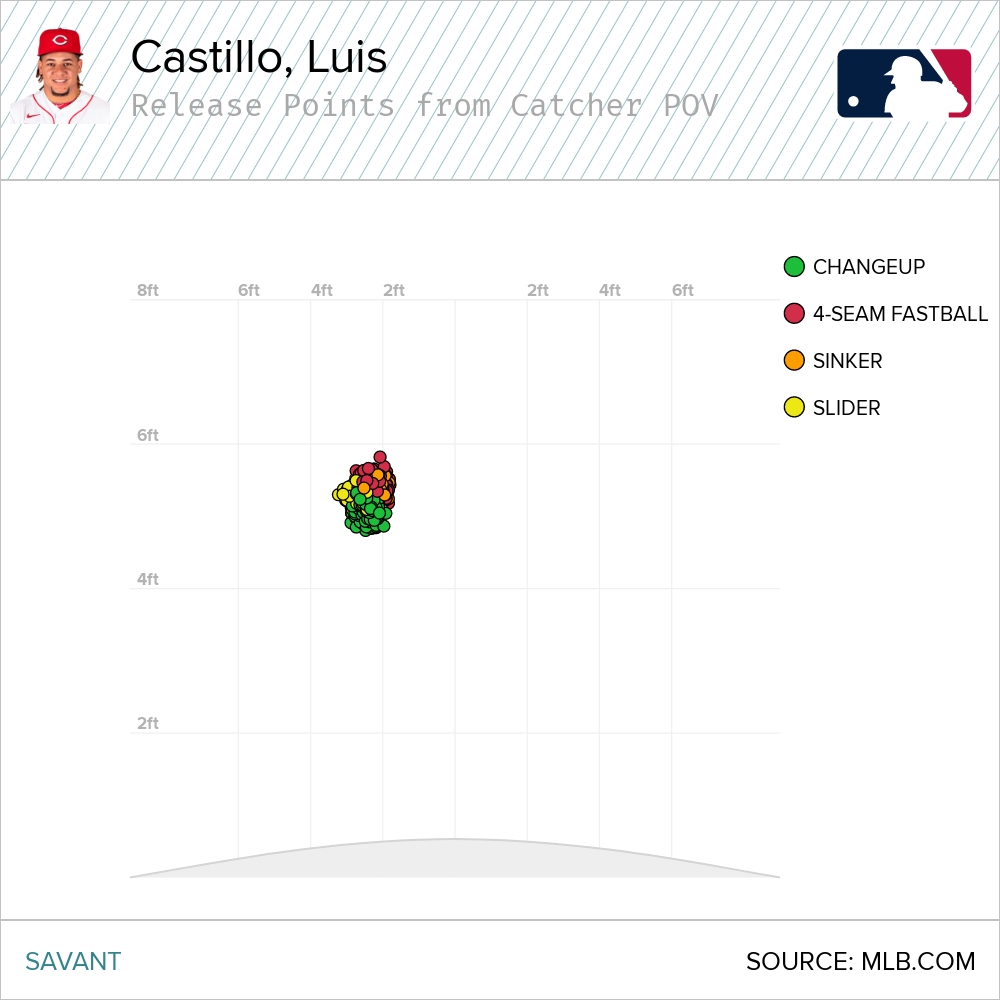 |
| 2021 Release Points | 2020 Release Points |
Of course, Castillo probably hasn’t hit that level of fatigue that could influence mechanical repeatability, but nonetheless his release point spread is much tighter than last season’s. This gives me hope that Castillo can find his groove going forward.
La Piedra still has the ability he had last year, but he’s going to need to clean up his command if he wants to find the same success. The shadows of the plate have always been where he performs best. If Castillo starts throwing his fastball at the top of the zone, his slider down and in (lefties POV), and his sinker and changeup low and away (lefties POV), I’m confident that the whiffs will come back. The whiffs are the key ingredient. If Castillo starts getting more whiffs, the strikeouts will come, and so will the overall success.
Photo by Jimmy Simmons/Icon Sportswire

Thank you, from a frustrated Reds fan!